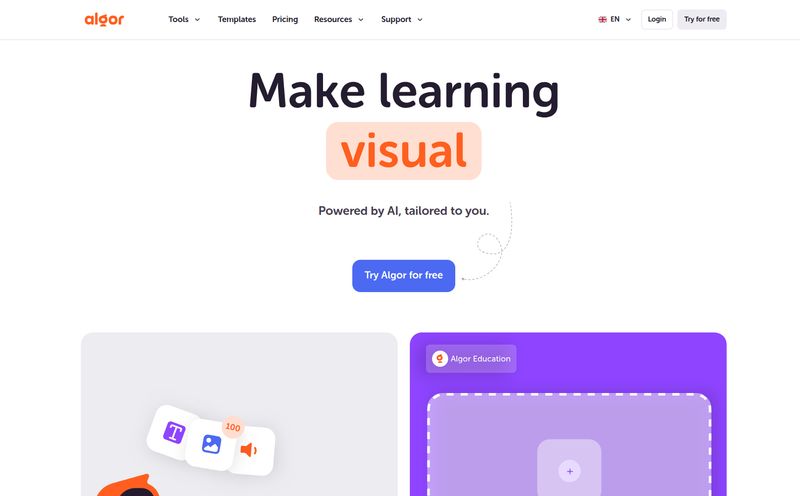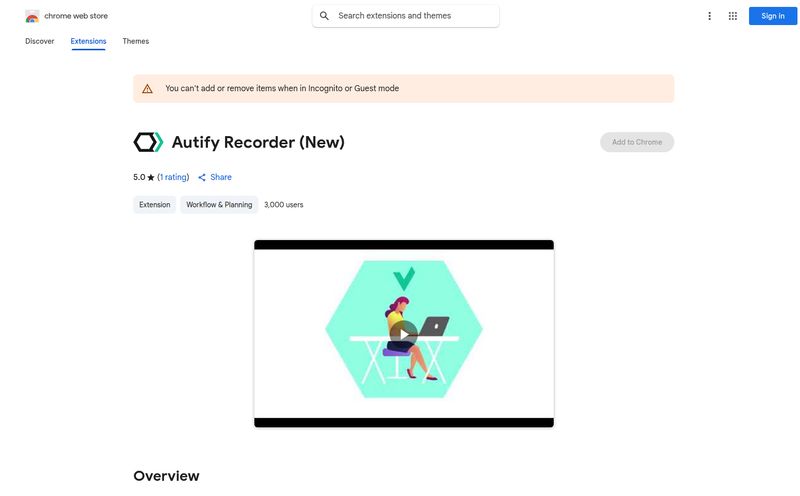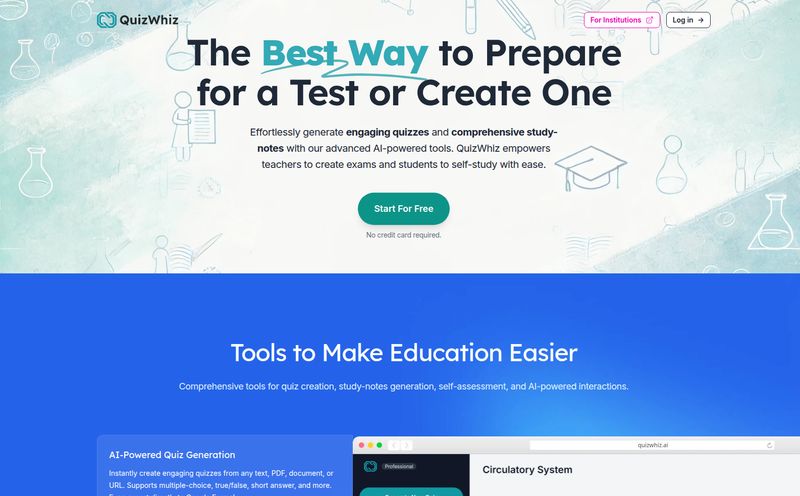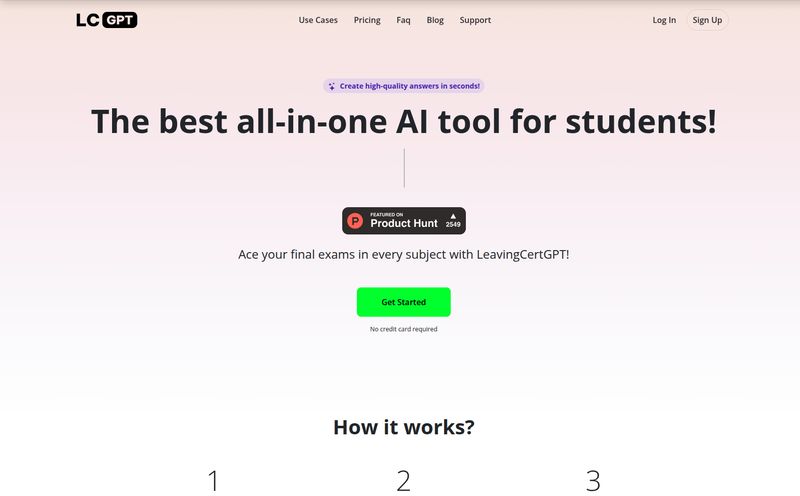Nobody gets into marketing, or business, or project management because they have a burning passion for building online forms. It's the digital equivalent of doing your taxes. A necessary, often tedious, and sometimes soul-crushing chore you have to get through to get to the good stuff—the data, the leads, the feedback.
I’ve lost more hours than I care to admit wrestling with clunky drag-and-drop interfaces, fighting with conditional logic that refuses to cooperate, and trying to make the darn thing not look like it was designed in 1998. It’s a universal pain point. In fact, I saw a stat on the Makeform site that said 70% of teams wasted hours making forms. I don't doubt it for a second. That feels... conservative, even.
So when I stumbled across a tool that promised to turn a simple text prompt into a complete form, I was skeptical. We're in the middle of an AI gold rush, and frankly, a lot of the 'AI-powered' tools out there feel like they just slapped a chatbot onto an old process. But Makeform felt different from the get-go. The premise is so simple, it’s almost insulting no one did it this well before.
What If You Could Just... Ask for a Form?
This is the core idea behind Makeform. It's less like using a piece of software and more like briefing a very efficient, slightly psychic assistant. You don't drag, you don't drop, you don't hunt through menus for a 'multiple choice' field. You just... talk to it.
You type something like, “Create a lead generation form for a free SEO webinar. I need first name, last name, work email, and company size. Also ask what their biggest SEO challenge is.”
And then… poof. It happens. In seconds, you have a fully functional, logically sound, and surprisingly stylish form ready to go. It’s the kind of tech that feels like genuine magic the first time you use it. You’re not building; you’re creating. It removes the friction between having an idea and executing it.
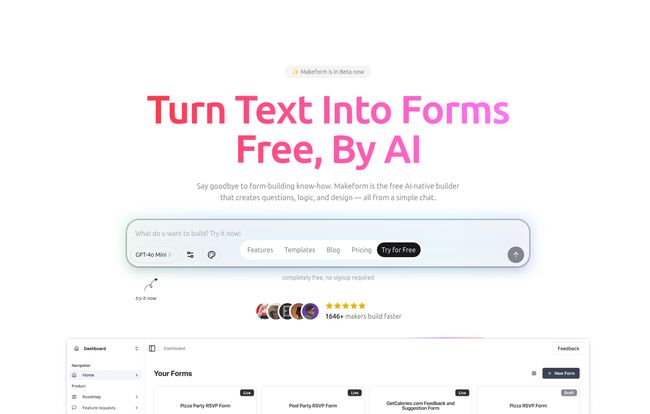
Visit Makeform
How Makeform Turns Words into Workflows
The whole process is deceptively simple, which is its greatest strength. They boil it down to three steps, and they aren't lying.
1. Describe Your Form (The Fun Part)
This is where you just let your needs be known. You can be as simple or complex as you want. Ask for a customer satisfaction survey, a pizza party RSVP, a multi-page quiz, or a complex registration form. The AI is impressively good at understanding context and intent.
2. AI Does the Heavy Lifting
This is the magic moment. The AI doesn't just create a list of questions. It structures the form, applies smart validation (like making sure an email field actually requires an email), and even styles it to look modern and clean right out of the box. It’s a massive time saver.
3. Customize and Launch
Once the AI has done its thing, you're not locked in. You get full control to tweak everything. Change colors to match your brand, adjust fonts, add your logo, and—this is huge—set up integrations. You can connect it to your existing workflow with tools like Slack, Google Sheets, or Zapier, and then embed it on your site or share a direct link.
The Features That Actually Move the Needle
Okay, “AI-powered” is a great buzzword, but a tool is only as good as its features. Makeform isn't just a one-trick pony. Here’s what stood out to me as a long-time marketing and traffic guy.
- Smart Automations & Integrations: This is non-negotiable for me. A form that lives in a silo is useless. The ability to pipe submissions directly into a Google Sheet or get a Slack notification for every new lead is essential. The native Zapier integration means you can connect it to virtually any CRM or marketing automation tool you’re already using. This isn't just a convenience; it's how you shorten your speed-to-lead time.
- Variables & Conditional Logic: This is where a simple form becomes a smart one. You can show or hide questions based on previous answers. For example, if a user says they're a 'Beginner' in your survey, you can show them a different set of follow-up questions than you would an 'Expert'. This makes the experience more personal and the data you collect way more valuable.
- Analytics & Insights: Getting the data is only half the battle. You need to know how your form is performing. Makeform provides built-in analytics to track things like completion rates and drop-off points. Seeing that 50% of people abandon your form at question #7 is a massive, actionable insight.
- Complete Customization: While the AI gives you a great starting point, the ability to fine-tune the design is critical for brand consistency. You can control colors, fonts, layouts, and even upload your own logos or backgrounds. It’s robust enough to make the form truly feel like yours.
Let's Talk Money: The Makeform Pricing Tiers
This is often the sticking point, isn't it? A tool can be amazing, but if the pricing is out of whack, it’s a non-starter. I was genuinely surprised by Makeform's model. It's… generous. Like, really generous.
| Plan | Price | Key Features |
|---|---|---|
| FREE | $0 / month | Unlimited Forms, Unlimited Submissions, AI Creation, Custom Layouts, File Uploads, Basic Branding. |
| PRO | $24 / month | All Free features + AI Form Analyst, Premium Integrations, Custom Branding (White Label), Unlimited Domains, Priority Support. |
| ENTERPRISE | Custom Pricing | All Pro features + API Access, Advanced Data Retention, and features for larger teams. |
Let that sink in. The free plan gives you unlimited forms and unlimited submissions. That's practically unheard of in this space. For freelancers, startups, or anyone just needing to get powerful forms up and running, the free plan is a complete solution, not a crippled trial. The Pro plan, at $24 a month, is a no-brainer for any established business that needs to remove Makeform branding and access more powerful analytics and integrations.
The Good, The Bad, and The AI
No tool is perfect, right? After playing around with it for a while, here's my honest take.
The good stuff is obvious. It’s fast, it’s intuitive, and the AI is legitimately impressive. The free plan is incredible. The security is enterprise-grade, so you can feel confident handling sensitive data. It just works, and it saves a ton of time. It's a genuine game-changer for workflow efficiency.
On the flip side, some of the really juicy features are, understandably, behind a paywall. If you want to completely remove the Makeform branding (white-labeling), you’ll need the Pro plan. For most small businesses, this is a standard and acceptable trade-off. The most advanced features, like full API access for deep, custom development work, are reserved for the Enterprise plan. Again, this is pretty standard practice. It's not a con so much as a reality of the freemium model. They have to make money somewhere, right?
So, Who Is This Really For?
In my opinion, Makeform hits a massive sweet spot.
- Marketers: Build lead-gen forms, content download gates, and webinar registrations in minutes, not hours. Hook them into your automation flow and watch the leads roll in.
- Small Business Owners: You wear a dozen hats, and 'form designer' doesn't need to be one of them. Create contact forms, client intake forms, and feedback surveys without breaking a sweat or your budget.
- Product Teams: Quickly spin up user feedback surveys or feature request forms. The conditional logic means you can get really granular with your questions.
- HR & Operations: Perfect for simple application forms, employee satisfaction polls, or event registration.
Basically, if you're a person or a team that needs to collect information from other people and you value your time, this tool is for you. It democratizes form building, taking it out of the hands of just the tech-savvy and giving it to anyone with an idea.
Frequently Asked Questions About Makeform
Is my data safe with Makeform?
Yes. They emphasize enterprise-grade security with top-notch encryption and privacy protocols. They seem to take data security very seriously, which is crucial for any form tool.
Do I actually need to know how to code to use it?
Absolutely not. That's the whole point. If you can write an email or a text message, you can create a form. The AI handles all the technical stuff behind the scenes.
How good is the customization really?
It's quite extensive. After the AI generates the form, you can go in and tweak almost everything visually—colors, fonts, button styles, backgrounds. You can also add, remove, or reorder fields manually. For most users, it offers more than enough control.
What integrations are available on the free plan?
The free plan offers a solid set of integrations, including fundamentals like Slack and Google Sheets. The connection to Zapier is also available, which opens up thousands of other apps. Some of the more direct, premium integrations might require the Pro plan.
Can I create quizzes and surveys, or is it just for contact forms?
You can create a huge variety of things: complex surveys, multi-page quizzes with scoring, polls, registration forms, and of course, simple contact forms. You just tell the AI what you need, and it adapts.
Is This The End of Form-Building As We Know It?
Okay, maybe that’s a bit dramatic. But Makeform represents a fundamental shift. It moves the task of form building from mechanical construction to creative direction. You're no longer a laborer laying digital bricks; you're the architect describing the vision.
For me, any tool that eliminates tedious, low-value work is a winner. It frees up my brain cells for the things that actually grow a business—strategy, creativity, and connecting with customers. Makeform does exactly that. It’s fast, powerful, and the free offering is so good it feels like a cheat code. If you ever find yourself needing to create a form online, I honestly can't think of a reason not to give it a try.
